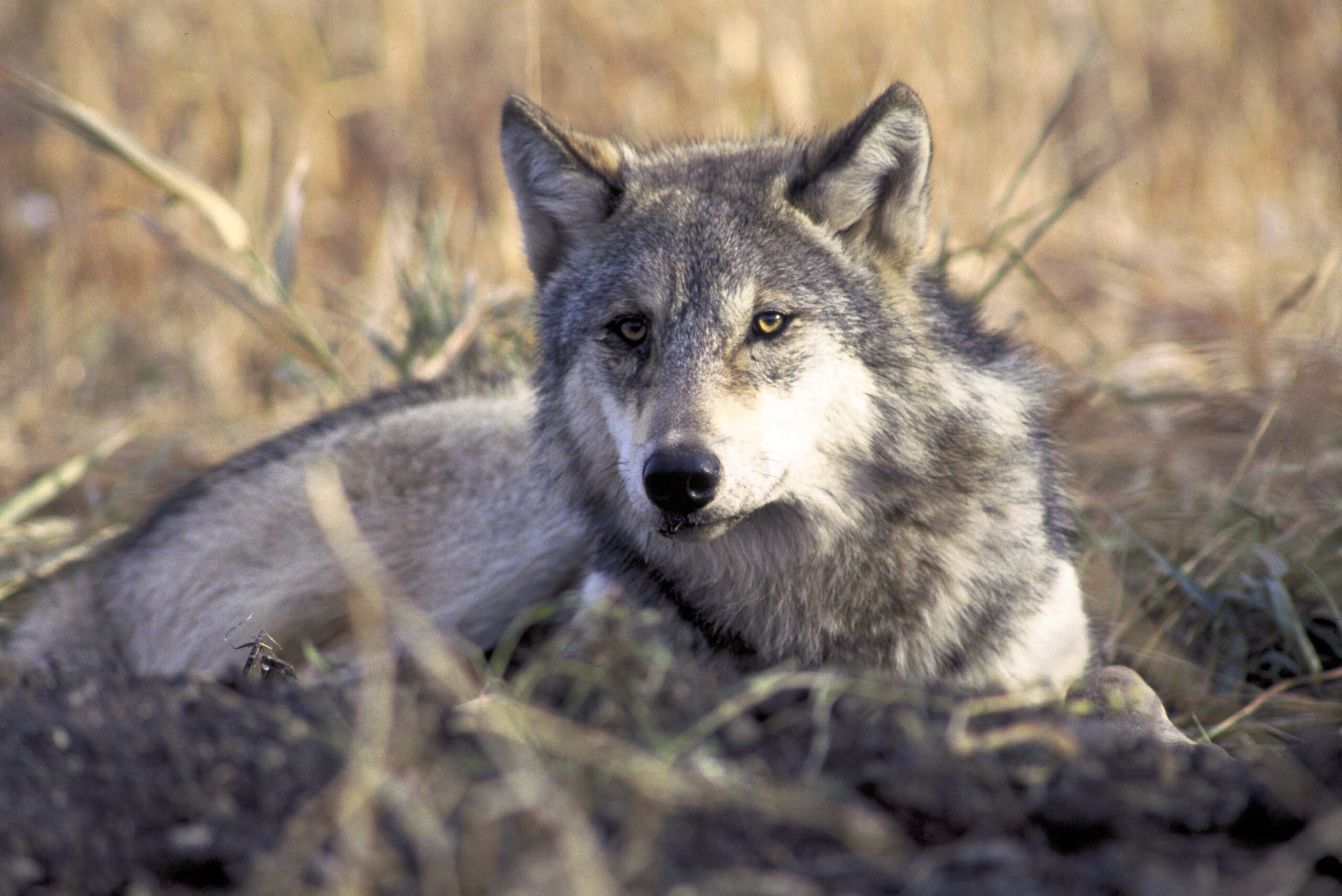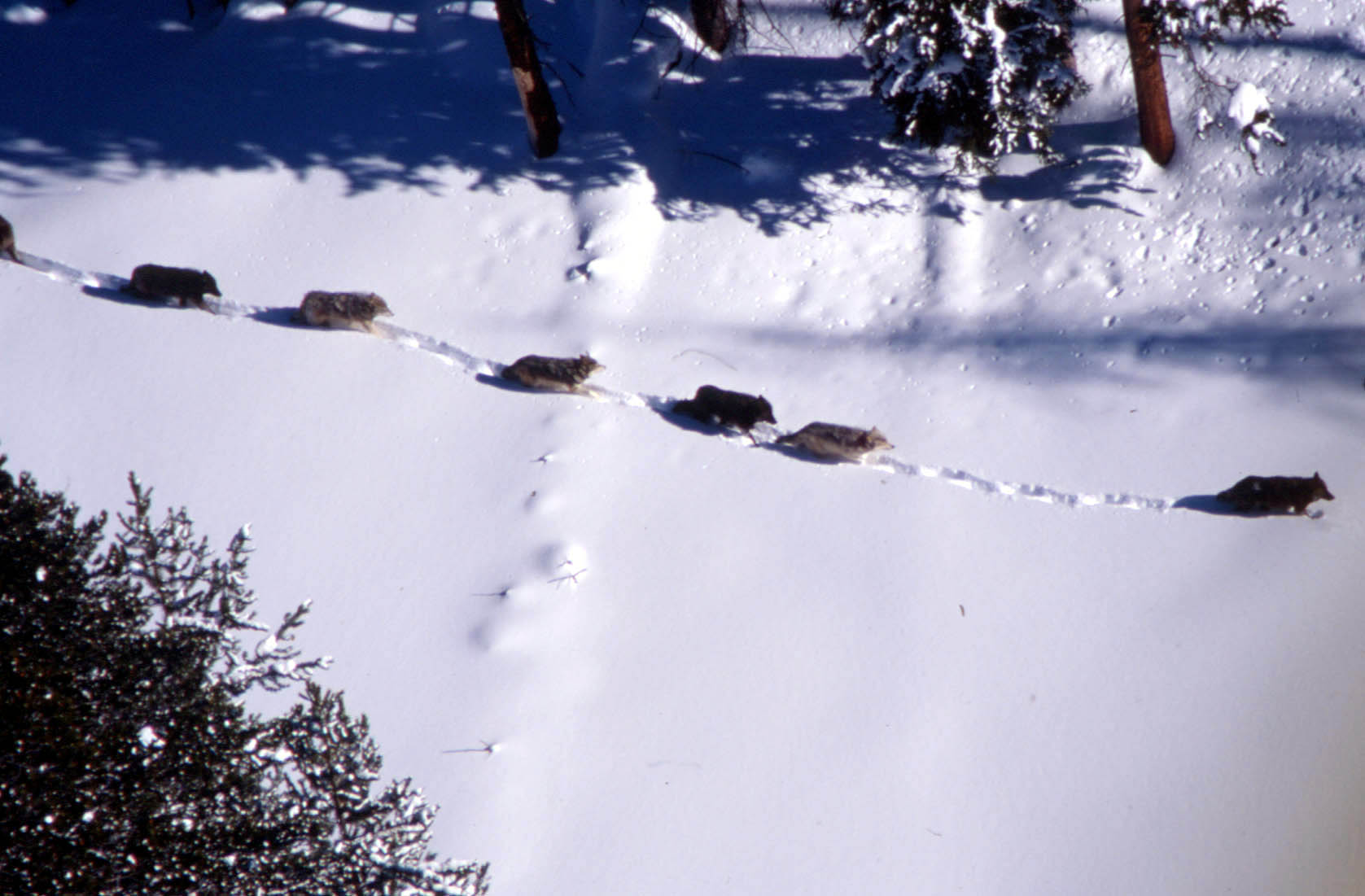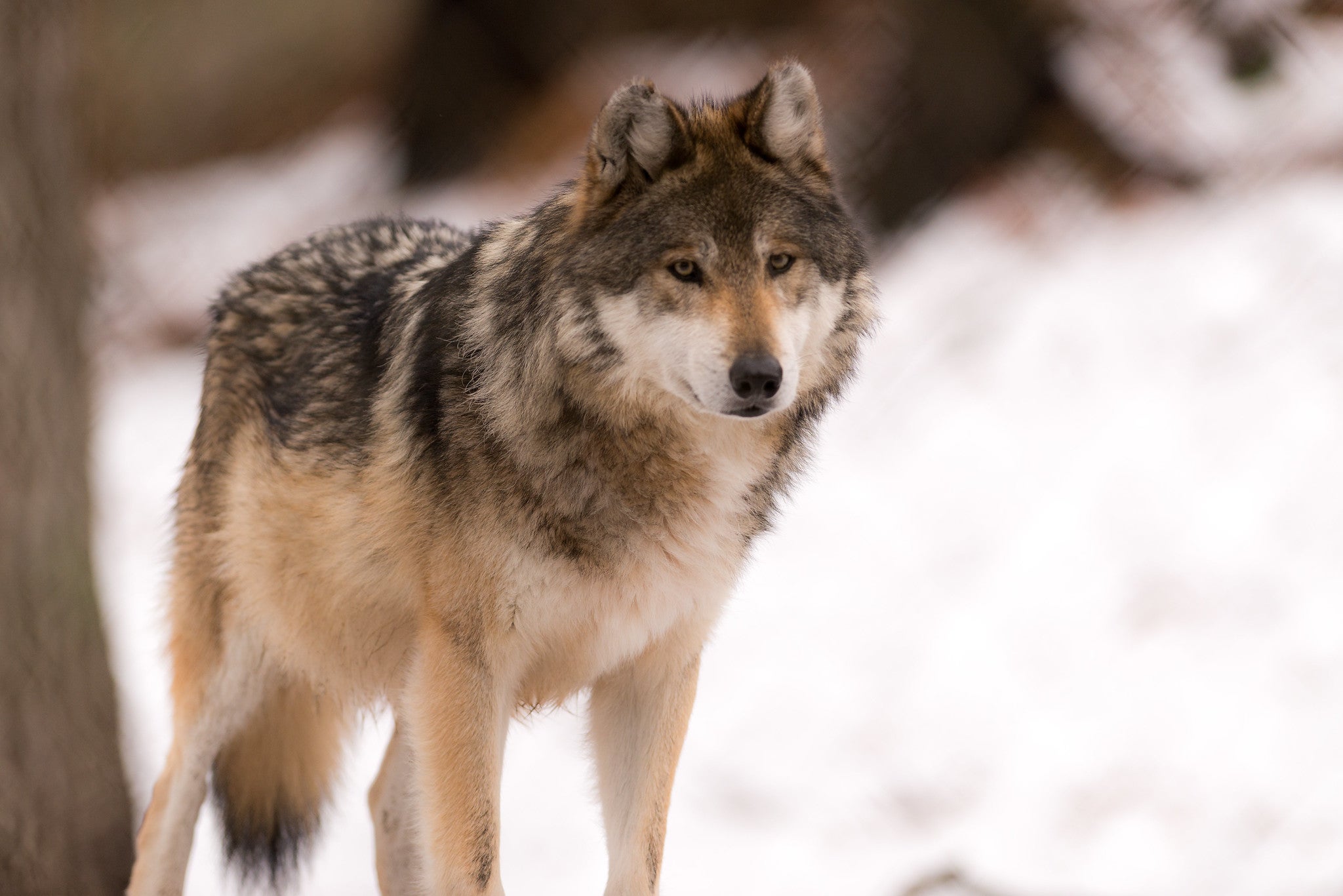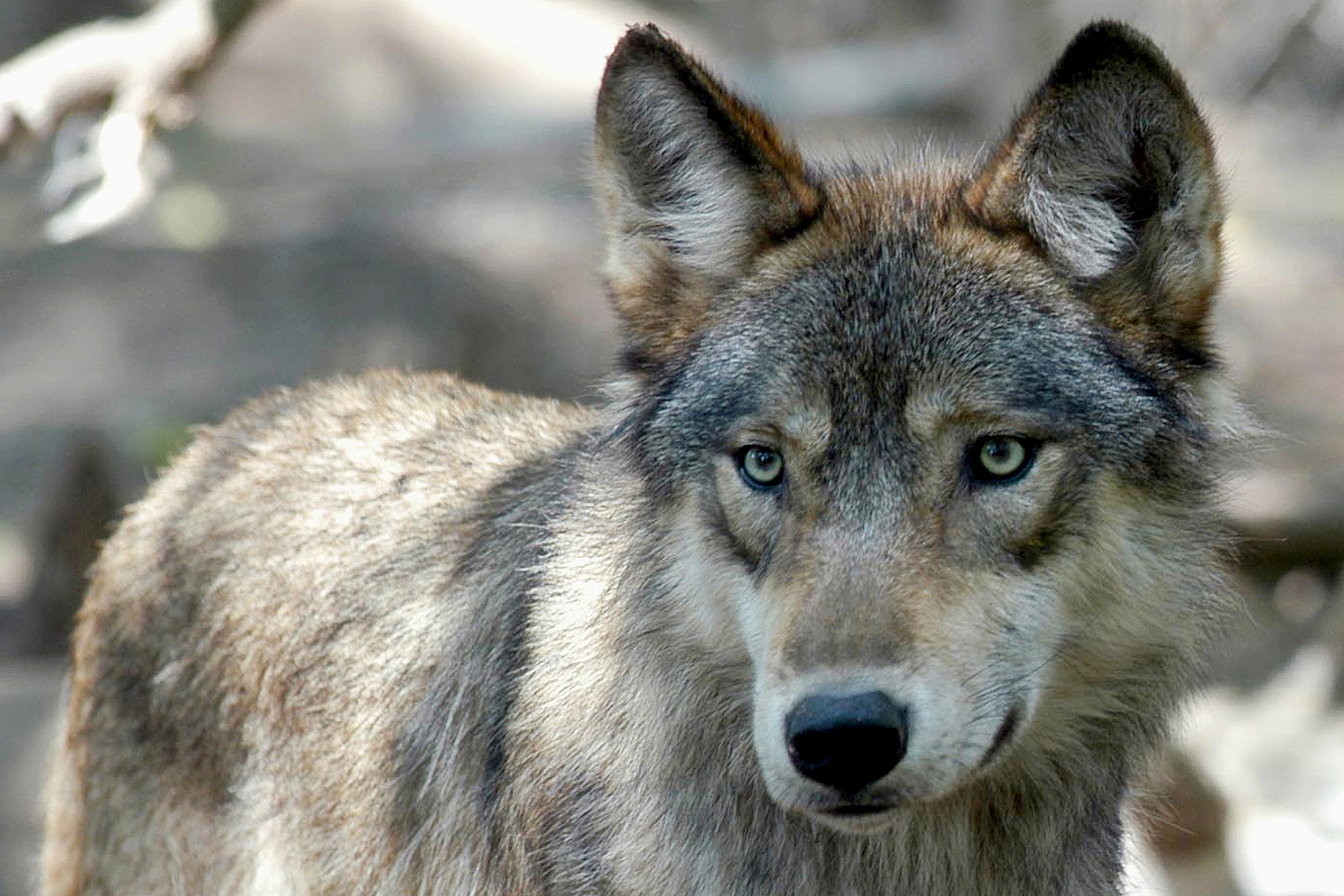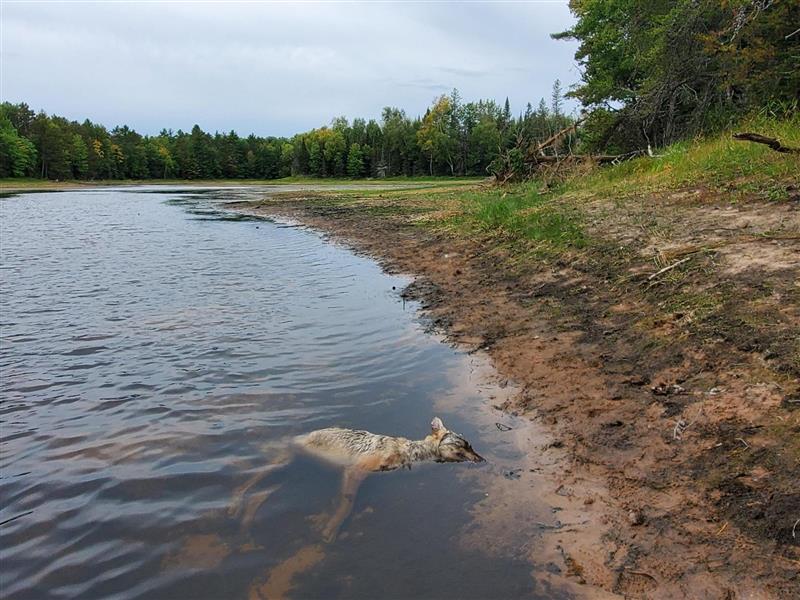Protections for most gray wolves will once again be eliminated under a final rule announced by the Trump administration. The decision removes gray wolves, except for the Mexican wolf, from the endangered species list in the lower 48 states. The final rule would take effect in January.
U.S. Interior Secretary David Bernhardt made the announcement on Thursday at the Minnesota Valley National Wildlife refuge in Bloomington, Minnesota. Bernhardt said last year that the agency planned to propose a rule to de-list the gray wolf, touting the animal’s recovery as one of the nation’s great conservation successes.
“Today’s action reflects the Trump Administration’s continued commitment to species conservation based on the parameters of the law and the best scientific and commercial data available,” said Secretary Bernhardt in a news release. “After more than 45 years as a listed species, the gray wolf has exceeded all conservation goals for recovery. Today’s announcement simply reflects the determination that this species is neither a threatened nor endangered species based on the specific factors Congress has laid out in the law.”
Stay informed on the latest news
Sign up for WPR’s email newsletter.
The announcement comes days before the election and would allow Wisconsin’s wolf hunt, which was first held in 2012 when the wolves were last de-lised, to resume. Wisconsin is a key battleground state in the U.S. presidential race between President Donald Trump and Democratic presidential nominee and former Vice President Joe Biden.
Wisconsin hasn’t had a wolf hunt since a 2014 ruling placed the gray wolf back on the endangered species list in the western Great Lakes region. Under state law, the wolf hunting and trapping season begins Oct. 15 and runs through the last day of February when the wolf is not listed as an endangered species.
Some scientists who reviewed the proposal to de-list the wolf have questioned the science behind the push to remove protections for the animal.
More than 6,000 wolves currently exist in the continental U.S., according to federal wildlife officials. At one time, Wisconsin alone had as many as 5,000 wolves before they were hunted nearly to extinction, according to the Wisconsin Department of Natural Resources.
Wisconsin’s wolf population grew 13 percent in the most recent count to more than 1,000 wolves, according to state data.
Aaron Buchholz, deputy administrator of the DNR’s Division of Fish, Wildlife and Parks, said the agency welcomed the decision.
“Wolf management, including hunting, will be science-based and conducted in a transparent and deliberative process,” said Buchholz. “Public and tribal participation will be encouraged, and we welcome all respective viewpoints on the matter.”
Buchholz said the agency will revisit its wolf management plan and the wolf hunt. He added that de-listing wolves would give the agency more flexibility to use lethal means to manage the wolf population, especially when livestock depredation occurs.
Wolves have been a source of frustration for farmers and hunters who have lost animals or pets due to wolf encounters. WPR has previously reported that conflicts between wolves and people have resulted in the state DNR paying at least $2.5 million in damage payments to hunters and livestock owners over the last three decades. The agency has documented at least 260 gray wolves that have been killed illegally in Wisconsin since 1985.
Despite conflicts, a 2014 DNR survey showed resident’s attitudes toward wolves were more favorable than unfavorable. Although, the survey found more support for the animals outside its range in northern and central Wisconsin. The survey also showed a majority of residents supported a hunting and trapping season, which has drawn criticism from tribes and environmental groups.
Environmental and conservation groups denounced the de-listing effort, including Melissa Smith, executive director of Friends of the Wisconsin Wolf & Wildlife. She said she feared removing protections would threaten the wolf’s recovery to its historic range. Smith also highlighted that wolves are just beginning to gain a foothold in other states.
“It’s not just about Wisconsin. This is nationwide, so it’s pretty troubling,” said Smith. “Those states that do have management of wolves have very aggressive killing seasons and trapping seasons, and Wisconsin I would expect will not be much different.”
Environmental groups like the Center for Biological Diversity have said they intend to file a legal challenge to the rule.
Farmers and lawmakers have been pushing to return management to the states. Multiple bills have been introduced in Congress to de-list the wolf over the last several years with the most recent proposal introduced by U.S. Rep. Tom Tiffany, R-Minocqua, in September.
U.S. Sen. Ron Johnson, R-Wis., introduced legislation in 2015 along with U.S. Rep. Reid Ribble to remove protections for the gray wolf. In a statement Thursday, Johnson said he was pleased with the Trump administration’s decision, but acknowledged it would likely face legal challenges from “irrational activists.”
“To ensure this policy isn’t obstructed, Congress must do its job and act to codify it,” said Johnson.
Peter David, wildlife biologist for the Great Lakes Indian Fish and Wildlife Commission, said the rule is disappointing to tribes. David said Wisconsin tribes have a deep cultural connection to wolves, which play a pivotal role in a healthy ecosystem in the northern forests.
“They’re very interested in protecting wolves and gaining the maximum amount of benefits that wolves provide,” said David. “We know that was fairly different than the management goals of the state the last time wolves were de-listed.”
David said tribes are odds with state law that requires a wolf hunt when the animals aren’t under federal protection.
Conservation group Wisconsin’s Green Fire said it supports returning wolf management to states and tribes because the recovery of wolves in Wisconsin and the surrounding region meet the standards set under the Endangered Species Act. But the group is urging the DNR to update its 1999 wolf management plan, according to Sarah Wilkins, science director with Wisconsin’s Green Fire.
“The 1999 plan, which is the one that’s in place right now is outdated, and it’s not using the most current and up-to-date information around wolf biology and wolf science,” said Wilkins.
The agency’s 1999 wolf management plan set a goal of 350 wolves for the state, but that figure was based on a projected population of 500 wolves across Wisconsin.
The conservation group also urged the agency to work with a science and technical advisory committee along with a committee of diverse stakeholders in developing a plan, as well as Wisconsin tribes.
“We shouldn’t be moving forward and jumping into a hunt right now until we have that conservation plan in place,” said Wilkins.
If the hunt is reinstated, the group said the agency should maintain the wolf population within numbers seen over the last several years in the range of 866 to 1,034 wolves. Wilkins said they’re also recommending changes to state law that would ensure decisions regarding wolf management and the wolf hunt would reside with the agency.
Wisconsin hunters killed 528 wolves in the three seasons a hunt was held in the state before the animal was placed back on the endangered species list.
Wisconsin Public Radio, © Copyright 2025, Board of Regents of the University of Wisconsin System and Wisconsin Educational Communications Board.
